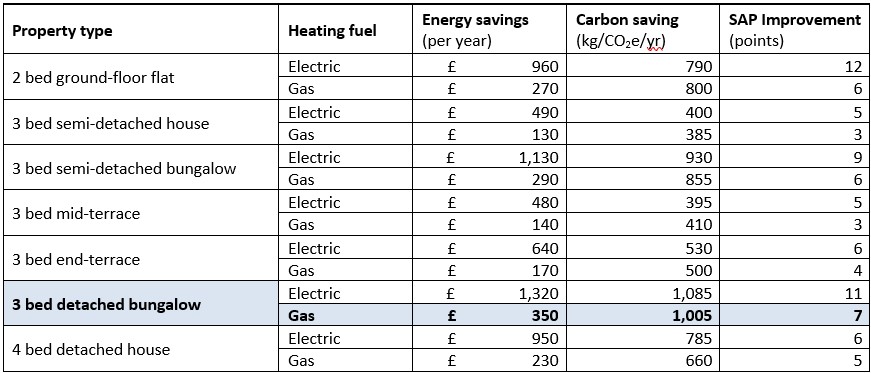Energy Saving Trust updated the energy saving claims on Q-Bot’s underfloor insulation – save up to £350 in a gas heated home.
In March 2020, Q-Bot worked with the Energy Saving Trust (EST), a trusted and independent organisation, to verify and certify energy savings claims following the installation of Q-Bot’s robotic underfloor insulation in homes across the UK. The verification report was recently updated following the unprecedented rise in energy prices from the 1st of April 2022.
The energy price cap rose by 54% in April, affecting millions of people now in, and at risk of, fuel poverty. The cap is also predicted to increase again by a further 65% in October this year. Insulation and low carbon heating system are now, more than ever, crucial in addressing the climate and energy crisis. Benefits are endless, as it saves money on gas and electricity bills, improves daily comfort, reduces carbon footprint, and increases Energy Performance Ratings (EPC’s by improving SAP scores) of a property, therefore the property’s value (find out more about the impact of energy efficiency on your home's value). This also means healthier and warmer homes to live in, as well as the positive impact on climate change by reducing the demand for heat.
The results of the Energy Saving Trust’s modelling demonstrate increases in SAP scores, by between 2 and 12 points, and reductions in energy bills after the installation of Q-Bot’s underfloor insulation in all property types. This further supports the well-established position that floor insulation improves the energy efficiency of homes. EST indicates that for a gas-heated home:
-
3-bedroom detached bungalow, insulating a floor with Q-Bot could typically save on average £350 a year (previously £195 a year in 2020).
-
2-bedroom ground floor flat, insulating a floor with Q-Bot could typically save on average £270 a year (previously £155 a year in 2020).
Uninsulated suspended floors are a significant cause of heat loss in homes, potentially as much as through an uninsulated loft, cavity, or solid wall. More than 10 million homes in the UK have suspended timber floors and very few have been insulated because of the disruption and cost involved. To address this, Q-Bot developed an innovative solution that uses a robot to retrofit suspended floors without the need to remove furniture and uplift the entire floor covering and floorboards.
Energy Saving Trust used the energy modelling system BREDEM SAP and the Dynamic Engine to undertake a thorough evaluation and assess the effectiveness of Q-Bot’s solution as well as the impact on energy efficiency of different types of homes. Q-Bot submitted certifications, such as a BBA certificate, along with property data collected on site before and after the installation for the assessment.
As a result, Energy Saving Trust is assured that Q-Bot follows a rigorous quality management process and supports the view that insulating suspended timber floor can reduce a home’ heat loss, reducing energy demand and lowering fuel bills. Insulating a floor with Q-Bot may typically save around £190 a year in a gas-heated home or £430 a year in an electrically heated home. In addition, the report identified that Q-Bot’s innovative solution can contribute to maintaining the continuity of thermal insulation at junctions with other elements and minimise thermal bridges and air infiltration.
Energy savings claims verified by Energy Saving Trust per property type and heating fuel (gas and electric):

Contact us to receive full report.
Best ways to insulate your floor
Five things you didn't know about underfloor insulation
